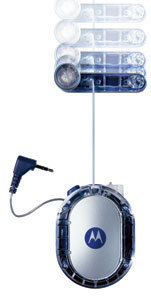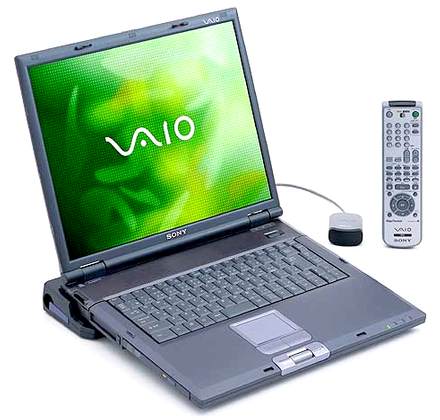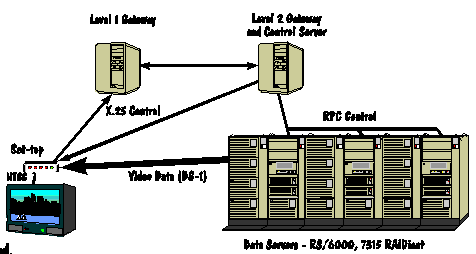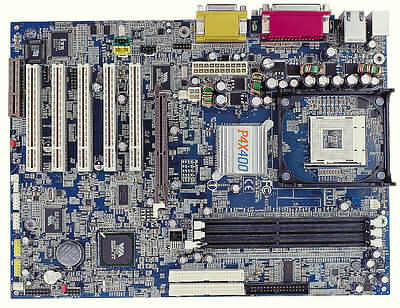 |
||
|
||
| ||
Motorola to offer a retractable headset Hitachi´s multilevel flash cell for 1-Gbit chips Photo of the day: Gigabyte´s AP128D-H3 graphics card based on RADEON 8500XT VAIO BioNote PCG-GRX91G/P: the first DVD-RW-equipped notebook from Sony SD/CF adapter from Matsushita: a nice kickshaw Edit video anywhere with i-Link IBM presents low-end data storage system Chaintech´s graphics card roadmap PowerLeap presents 1.4 GHz Celeron kits for Slot-1 and Socket 370 Pentium II / III systems The first VIA Apollo P4X400 board — P4PB 400 from VIA ATI A3-based SST-5650MBD motherboard from ASKA 15" TFT LCD panels might drop to $240 by the year-end Nanya believes DDR shortage to continue IBM and Sony to present "desktop" notebooks Motorola to offer a retractable headset Motorola reported the expected availability of the retractable headset in October 2002 in US. Though it´s not Bluetooth, it can minimize the cable well. The price is unknown, but doubtfully it will be high.
Hitachi´s multilevel flash cell for 1-Gbit chips After several months of honing its proprietary multilevel flash cell structure Hitachi reported plans to release 1 Gbit flash memories supporting up to 10 Mbps data transfer rate.Hitachi first described the assist-gate-AND architecture in December at the International Electron Devices Meeting in Washington. The company hopes its chips will be used in high-end digital cameras, cellular phones and PDAs. Instead of using Fowler-Nordheim tunneling for programming, the chip uses hot electron injection, also used in NOR-type flash memory. But to reduce write times, electrons are injected from the source side, not from the drain side like in NOR memory, thus enabling faster, low-current parallel writing. The cell writing time, that is normally about 10-4 seconds for a Fowler-Nordheim tunneling cell, is reduced to 10-5 seconds in the AG-AND cell. Fowler-Nordheim is still used for erasures. In addition, the chip uses a four-bank configuration instead of one bank, which would enable only a 3 MB/s write speed. Hitachi reports the chip can supprot 20-MB/s write speeds, but not in case multilevel cell structure. 1-Gbit HN29V1G91 chip is housed in a 48-pin TSOP type-I package similar to Hitachi´s previous 512-Mbit flash memory chip. The novelty is pin-compatible with NAND interfaces.
Photo of the day: Gigabyte´s AP128D-H3 graphics card based on RADEON 8500XT Our video lab has enriched with the AP128D-H3 graphics card based on RADEON 8500XT.
It has 128 MB of 3.3 ns memory (4Mx32 DDR), core/memory clock rate is 300/300 MHz.
The card features analog, digital DVI-I, S-Video out, Video-in. The package includes 6 games: Serious Sam, Heavy Metal F.A.K.K.2, Rune, Motocross Mania, 4X4 EVO, and Oni), and PowerDirector Pro 2.1 and CyberLink PowerDVD XP software.
 VAIO BioNote PCG-GRX91G/P: the first DVD-RW-equipped notebook from Sony Sony presented the PCG-GRX91G/P notebook featuring DVD-RW drive to appear in retail in the beginning of October. The system bases on 2 GHz Mobile Pentium 4-M and has 60 GB HDD. Other specifications are close to PCG-GRX81G/P: 16" 1600È1200 (UXGA) display, 512 MB DDR266 RAM, Intel 845MP chipset, MOBILITY RADEON 7500 graphics (32 MB), Windows XP Professional. The built-in slim DVD-RW enables to write DVD-R/RW discs at nominal speed, CD-RW/DVD speeds are 16/10/24/8x. The notebook features a TV-tuner, hardware MPEG2 encoder, necessary software. Sony PCG-GRX91G/P is 355È292È39.8 mm in size, weighs 3.8 kg. The expected price is about $3600.
SD/CF adapter from Matsushita: a nice kickshaw Matsushita Electric presented a new BN-CSDABP3 media adapter enabling to read/write SD and MMC flash cards using CF Type I slot. 3.3 mm thick this adapter supports 8 MB to 512 MB SD and 4 MB to 128 MB MMC cards. It´s based on a new controller chip occupying 15% less space inside the device. the maximum data transfer rate provided is 3.3 MB/s.
 Panasonic BN-CFADPP3 will appear in retail in August, the recommended price being about $40.
Edit video anywhere with i-Link This interesting portable PC has been announced by Broadax. The lunchbox-sized system of video and graphics editing is designed for cameramen who work on the go a lot. i-Link is designed to provide reliability of work anywhere. It features the following hardware: two Intel P3 or AMD K7 CPUs, GeForce 4 Ti 4200 or Ti 4600 GPU, up to 4 GB DDRAM, RAID 0, 1 and 5 hard disk, USB 1.1/2.0, IEEE1394 and 10/100 Mbps Ethernet, CD-R, CD-RW or DVD drive. It also has 4 32-bit PCI and 2 64-bit PCI expansion slots. The workstations is controlled by Windows 2000 or XP and has Microsoft Movie Maker software preinstalled. The latter is said to pack up to 20 hours of video into 1 GB of memory. i-Link features two variants of TFT LCD display: 15.1" 1024x768 XGA or 15.4" 1280x1024 SXGA. The screen has special covering to provide better visibility in the daylight and rain. The price of this workstation is a bit smaller than $4000.
IBM presents low-end data storage system Having decided to repeat the success of its high-end data storage system — Shark, IBM presented a similar networked low-end product. The system, that costs about $4420, is designed for storing mail server e-mails, backing up data and document archiving. Perhaps, IBM decided to produce a low-end system, seeing the similar product released by EMC.
Chaintech´s graphics card roadmap From June to September Chaintech plans to present a serie of new SiS and NVIDIA based graphics cards.SiS Xabre serie:
NVIDIA GeForce4 MX serie:
PowerLeap presents 1.4 GHz Celeron kits for Slot-1 and Socket 370 Pentium II / III systems PowerLeap presented two new kits for installing current 1.4 GHz Intel Celeron into older Pentium II and Pentium III systems: PL-iP3/T — for upgrading Slot-1 systems and PL-370/T — for Socket 370 solutions.The company has already started to ship PowerLeap PL-iP3/T 1400C and PL-370/T 1400C, their recommended price is $169.95.
The first VIA Apollo P4X400 board — P4PB 400 from VIA VIA Technologies presented its new VIA P4PB 400 ATX system board based on VIA Apollo P4X400. VIA P4PB 400 brief specifications:
VIA P4PB 400 will feature two versions: P4PB 400-FL — complete, and P4PB 400-L — without IEEE 1394 support.
ATI A3-based SST-5650MBD motherboard from ASKA ASKA presented the new Micro ATX SST-5650MBD motherboard based on ATI A3 chipset. The board is designed for Socket A AMD Athlon XP / Athlon / Duron with DDR 200/266 MHz and features 2 DDR DIMM slots (DDR200/266, up to 1 GB), 3 PCI slots, AGP slot, integrated Radeon 7000 graphics (4-64 MB from system RAM), AC´97 codec. By the way, the Saphire company web-site presents the similar designed A3-M275 board.
15" TFT LCD panels might drop to $240 by the year-end Analysts from the Taiwanese Market Intelligence Center forecast 15" TFT LCD panel prices to drop in the second half-year of 2002.This might happen after the successful launch of 5-generation LG-Philips and Samsung Electronics fabs, allowing the companies to reduce prices and take over a large part of the market. As a result Taiwanese makers will have to follow these two and reduce prices as well. According to MIC, Hewlett-Packard and Dell already plan the TFT LCD monitor sales campaign in the 4Q to increase the proportion of PCs sold with TFT LCD monitors to 30% comparing to 15% last year. So, even without LG-Philips 15" TFT LCD panel prices might drop below $250 from the current $255-265, and down to $240 in the fourth quarter. TFT LCD panel prices are also affected by component prices (for polarizers, color filters and driver ICs) that continue to reduce as well. So, it will not necessarily reduce TFT LCD producers´ profit margins. It might even increase TFT LCD monitor demand and help to boost LCD shipments. MIC predicts that global TFT LCD supply and demand will reach a balance in the fourth quarter.
Nanya believes DDR shortage to continue According to Charles Kau, Nanya executive vice president, DDR shorttage might continue for at least next two months, as only some makers succeeded to re-equip their facilities from SDRAM to DDR.Kau said that Nanya raised the DDR to all products ratio to 38% last month and expects to increase it to 65% this month. At that the company reports low revenues — just NT$17 million instead of NT$3,328 billion expected. Kau explains it is a result of price reduction from expected $7.14 to $5.21 for 256 MBit chip, plus two earthquakes that resulted in 2 million chip underproduction. Finally, Nanya believes DDR shortage to make 256 MBit chip price grow to $9.50 in the third quarter, so the company can earn its NT$3 billions. Well, we wish them luck, of course, but hope prices do not grow this high.
IBM and Sony to present "desktop" notebooks All ages fall to fashion as well as to love. In this case wise and experienced IBM fell to the fashion of notebooks with desktop processors. The company plans to present them in the fourth quarter of this year. The development and production of new ThinkPad A series based on desktop processors is entrusted to Taiwanese Quanta Computer.Sony ÔÁËÖÅ also plans to release a notebook on a usual, desktop Pentium 4 to be produced by Asustek. So, the market easily adopted the trend of using desktop processors and chipsets in notebooks despite the availability of mobile variants. According to IDC IBM notebook sales volume reduced by 11.8% in the first quarter, making company´s share global market share 8.4%. Perhaps, that has happened because IBM´s rivals, namely Toshiba with its Satellite 1800 and Hewlett-Packard with Presario 1500, presented their desktop Pentium 4 notebooks. Besides, Dell plans to follow them as well, so the company should hurry to be in time for this market division.
Write a comment below. No registration needed!
|
Platform · Video · Multimedia · Mobile · Other || About us & Privacy policy · Twitter · Facebook Copyright © Byrds Research & Publishing, Ltd., 1997–2011. All rights reserved. |